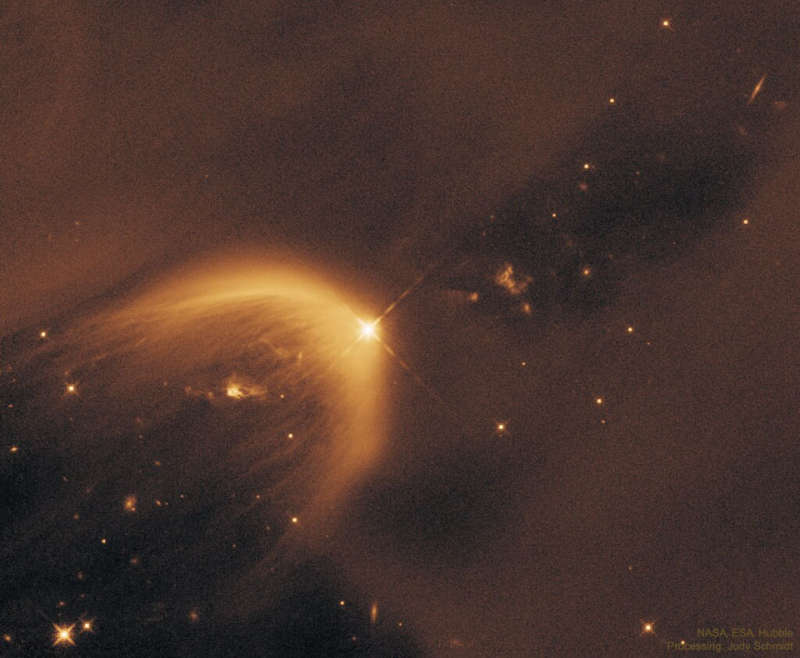Перевод: Д.Ю.Цветков
Пояснение:
Как образовалась эта необычная параболическая структура?
Освещенная полость, известная как
LDN 1471,
создана формирующейся
звездой,
которая видна как яркий источник на вершине
параболы.
Эта
протозвезда
создает
звездный ветер,
который взаимодействует с окружающим веществом в
молекулярном облаке
Персея,
вызывая свечение.
Мы видим только одну сторону полости, другая сторона скрыта темной
пылью.
Параболическая форма
возникает из-за расширения выдутой
звездным ветром
полости с течением времени.
С двух сторон от
протозвезды
видны дополнительные структуры, известные как
объекты Хербига-Аро,
они также возникают в результате взаимодействия выброса с окружающим веществом.
Причины возникновения
полос
на краях полости пока
остаются неизвестными.
Изображение
было получено
Космическим телескопом им.Хаббла
НАСА и ЕКА после того, как объект был обнаружен
Космическим телескопом им.Спитцера.
Исследуйте вашу Вселенную:
Генератор случайной Астрономической
картинки дня
1999 2000 2001 2002 2003 2004 2005 2006 2007 2008 2009 2010 2011 2012 2013 2014 2015 2016 2017 2018 2019 2020 2021 2022 2023 2024 2025 |
Январь Февраль Март Апрель Май Июнь Июль Август Сентябрь Октябрь Ноябрь Декабрь |
NASA Web Site Statements, Warnings, and Disclaimers
NASA Official: Jay Norris. Specific rights apply.
A service of: LHEA at NASA / GSFC
& Michigan Tech. U.
|
Публикации с ключевыми словами:
stellar wind - звездный ветер
Публикации со словами: stellar wind - звездный ветер | |
См. также:
Все публикации на ту же тему >> | |
